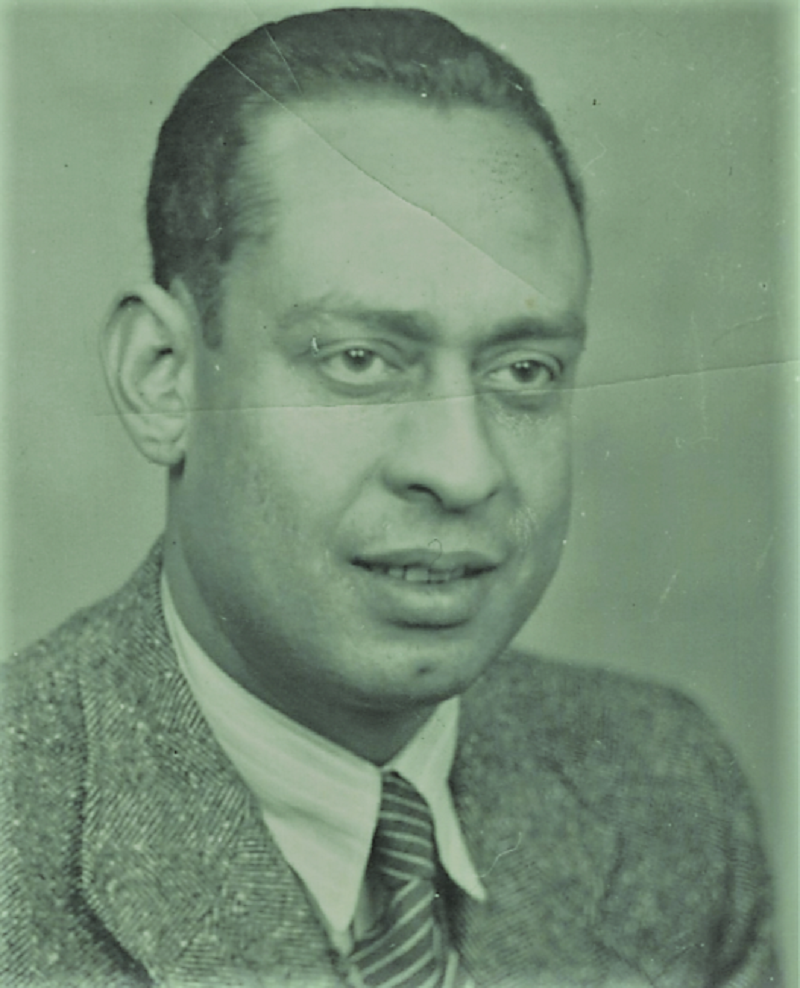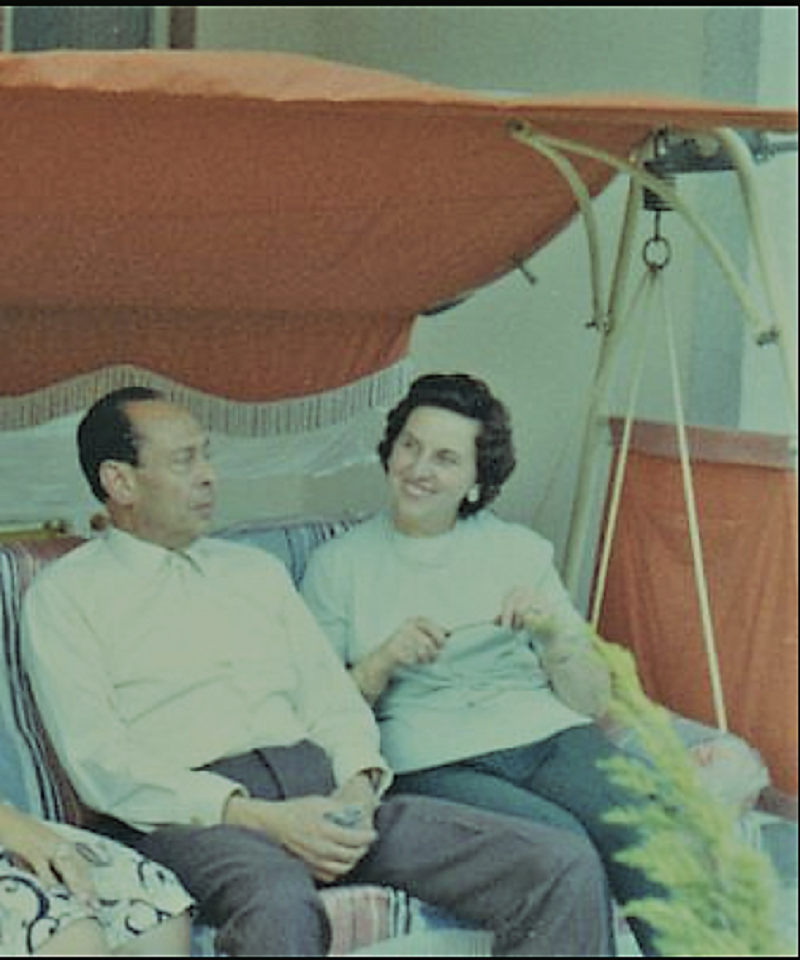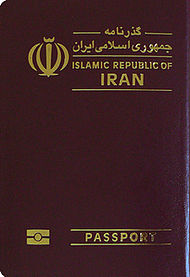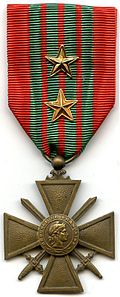
This may be a bit controversial in light of the current situation, but it is an important subject to be addressed. Nowadays there are those who would want you to believe that all Muslims want to kill all Jews, and vice versa. However, that is not the case, it isn’t the case now and it wasn’t the case during World War II.
I had done a piece on the Palestinian leader Amin Al Husseini, an ally of Adolf Hitler, recently, but I am a great believer in balance, hence I am doing this post today. There were many Muslims who saved Jews during the Holocaust, I will be focusing on a few of them.
The photograph above is of Abdelkader Mesli.
Abdelkader Mesli was born in 1902 in Khemis, French Algeria. When he was 17, he left his native country for France and arrived in Marseille. He worked as a docker, carpenter, mine worker, and salesman. In the early 1930s, he was appointed imam of the Grand Mosque of Paris, a position he held voluntarily. At the same time, he was listed in the records of the North African Affairs Service of the Paris Prefecture, which was responsible for spying and monitoring the activities of North Africans in mainland France.
When World War II broke out, Abdelkader Mesli got involved with Kaddour Benghabrit, the rector of the mosque, in rescuing Jews by issuing false certificates of Muslim faith. This act saved between 500 and 1600 people according to historians.
In 1942, Abdelkader Mesli was sent to Bordeaux as the Muslim chaplain at the Château du Hâ by Kaddour Benghabrit after Abdelkader Mesli was suspected by the German authorities. He organized escapes there and continued to issue false certificates, despite the suspicions of the Kommandatur. From February 1943 onwards, he became involved in a French Resistance organization by joining the Army Resistance Organization (ORA) In this capacity, he handled forged documents and provided shelter for escaped African soldiers. He had connections with Paul and Roger Valroff, who were his friends and provided assistance. Paul Valroff wrote numerous letters to him, invited him to take care of his son Roger, and expressed his gratitude. For example, on 6 September 1943, Paul Valroff wrote to Abdelkader Mesli:
“I apologize for imposing on you, and I thank you in advance for whatever you will do for a son. I hope to come to Bordeaux very soon and will be delighted to see you again. My dear friend, I send you all my friendship. The staff of the mosque asked me to send their regards to you.”
On 5 July 1944, Abdelkader Mesli was betrayed and arrested alongside Roger Valroff in a restaurant in Bordeaux by the Gestapo, and his home was raided by the French collaborationist police. They confiscated from his home: three suits, an overcoat, two pairs of shoes, six shirts, three pairs of underwear, a dozen handkerchiefs, a gold watch, a gold ring with a stone, and a batch of goods reserved for Muslims.
On August 8, 1944, the Nazis deported Abdelkader Mesli to Dachau. The transport took several weeks. Many of the prisoners did not survive the torturous journey in the middle of summer in southern France, which is why the deportation went down in history as a so-called “ghost train.”
Abdelkader Mesli was held in Dachau until September 1944. He was then transferred to a subcamp of the Mauthausen concentration camp, where he had to do brutal forced labor building an underground armaments project.

Despite extensive interrogations and torture, he did not divulge any resistant secrets. He survived the war and died in 1961.

Selahattin Ülkümen was a Turkish diplomat and consul in Rhodes during the Second World War, who assisted many local Jews to escape the Holocaust.
On July 19, 1944, all Jewish males over the age of 16 were ordered to report immediately to German headquarters with their identity cards and work permits. The Turkish consul knew the meaning of “temporary resettlement on a neighboring island.” He visited the German commander General von Kleeman, gambling that he could at least claim jurisdiction over the Turkish Jews. His reason: “The Turkish Republic is a neutral country and not involved in the war by any means.” Ulkumen’s gamble paid off and 42 Jews, some of whom were of doubtful Turkish nationality, were released and remained under his protection. Among the survivors was Maurice Soriano who survived due to his marriage to a Turkish citizen, Viktoria. Daniel Turiel and his wife Mathilde were also among the lucky ones and they said; “The only reason we were saved was through the relentless efforts of the Turkish Consul and the luck of one spouse in every Jewish family holding a Turkish passport.” Mathilde explained how Ulkumen acted on their behalf: Only about 15 men and women were Turkish, but Mr. Ulkumen included in his list 25 to 30 more people who he knew were no longer Turkish citizens since they had let their citizenship lapse. He also insisted that according to Turkish law, spouses of Turkish citizens were considered to be citizens themselves, and demanded their release. By his pretense that all those he listed were Turkish, he was able to save more people. Among those who were saved were Alberto and Renata Amato and their daughter Lina, who were Italian citizens. The remaining 1,700 Jews of Rhodes were herded into three boats and deported to Auschwitz. On August 2, 1944, Turkey ceased its diplomatic relations with Germany, and Ulkumen returned to Turkey. On December 13, 1989, Yad Vashem recognized Selahattin Ulkumen as Righteous among the Nations.

Koçerri, Kasem Jakup Kasem Jakup Koçerri was a farmer and a shephard in the village of Beshisht with business contacts in the city of Vlorë, about 180 km southwest of the capital city of Tirana, near the Adriatic Sea. There, he became acquainted with Jakov Solomoni, with whom he had commercial relations, and his wife and their four children. One of them, Moshe, was a young storekeeper, who on July 4, 1943, married a young Jewish woman of Greek origin, Janet. Four months before their wedding, her family had been sent from Salonika to Auschwitz. After Italy’s surrender and the occupation of Albania by the Germans in September 1943, the Germans began to apply their racial policy against the Jews. One day, when the anti-Jewish measures became harsher, Moshe’s father met urgently with his friend Kasem Jakup and asked him to help hide the young couple, Moshe and Janet. One day in March 1944, when Vlorë was surrounded by the Germans, Kasem Jakup Koçerri came to the Solomoni home in order to collect the couple. He left the horses in the forest, near the city, and under cover of darkness and winter, the three rode for hours until they reached the Koçerri home. Their house was located on a hill from which it was possible to observe what was happening in the vicinity. The arrival of the two “guests” was kept secret by the Koçerri family since they knew that the Germans and collaborators were carrying out searches for hidden Jews. Moshe and Janet Solomoni hid with them for four months, relying on the kindheartedness of their friend Kasem Jakup, until the Liberation. The other members of the Solomoni family also survived. After the war, Kasem Jakup remained in contact with the couple that he had rescued during the period of the German occupation of Albania. Moshe and Janet Solomoni remained in Albania, and only in 1991, after the fall of the communist regime, were able to immigrate to Israel. On August 8, 2000, Yad Vashem recognized Kasem Jakup Koçerri as Righteous Among the Nations.
Finishing up with the words of the Imam, Abdelkader Mesli said, “The worst enemy of man is ignorance.”
Sources
https://arolsen-archives.org/news/abdelkader-mesli-ein-imam-in-der-resistance/
https://collections.yadvashem.org/en/righteous/4017979
https://collections.yadvashem.org/en/righteous/10571260
https://fr.timesofisrael.com/abdelkader-mesli-limam-parisien-qui-a-sauve-des-juifs-pendant-la-shoah

Donation
I am passionate about my site and I know you all like reading my blogs. I have been doing this at no cost and will continue to do so. All I ask is for a voluntary donation of $2, however if you are not in a position to do so I can fully understand, maybe next time then. Thank you. To donate click on the credit/debit card icon of the card you will use. If you want to donate more then $2 just add a higher number in the box left from the PayPal link. Many thanks.
$2.00



























































You must be logged in to post a comment.